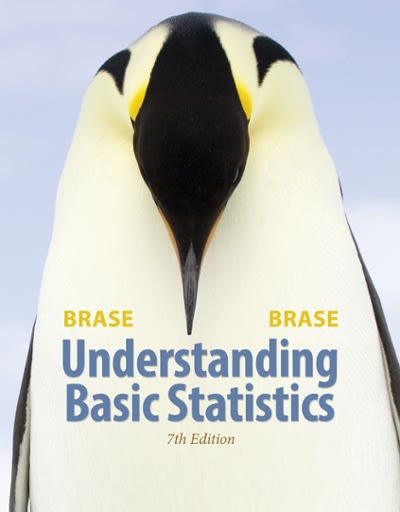Critical Thinking: Comparing Hypothesis Tests with U.S. Courtroom System Compare statistical testing with legal methods used in
Question:
Critical Thinking: Comparing Hypothesis Tests with U.S. Courtroom System Compare statistical testing with legal methods used in a U.S. court setting. Then discuss the following topics in class or consider the topics on your own. Please write a brief but complete essay in which you answer the following questions.
(a) In a court setting, the person charged with a crime is initially considered to be innocent. The claim of innocence is maintained until the jury returns with a decision. Explain how the claim of innocence could be taken to be the null hypothesis. Do we assume that the null hypothesis is true throughout the testing procedure? What would the alternate hypothesis be in a court setting?
(b) The court claims that a person is innocent if the evidence against the person is not adequate to fi nd him or her guilty. This does not mean, however, that the court has necessarily proved the person to be innocent. It simply means that the evidence against the person was not adequate for the jury to fi nd him or her guilty. How does this situation compare with a statistical test for which the conclusion is “do not reject” (i.e., accept) the null hypothesis? What would be a type II error in this context?
(c) If the evidence against a person is adequate for the jury to fi nd him or her guilty, then the court claims that the person is guilty. Remember, this does not mean that the court has necessarily proved the person to be guilty. It simply means that the evidence against the person was strong enough to fi nd him or her guilty. How does this situation compare with a statistical test for which the conclusion is to “reject” the null hypothesis? What would be a type I error in this context?
(d) In a court setting, the fi nal decision as to whether the person charged is innocent or guilty is made at the end of the trial, usually by a jury of impartial people. In hypothesis testing, the fi nal decision to reject or not reject the null hypothesis is made at the end of the test by using information or data from an (impartial) random sample. Discuss these similarities between statistical hypothesis testing and a court setting.
(e) We hope that you are able to use this discussion to increase your understanding of statistical testing by comparing it with something that is a well-known part of our American way of life. However, all analogies have weak points, and it is important not to take the analogy between statistical hypothesis testing and legal court methods too far. For instance, the judge does not set a level of signifi cance and tell the jury to determine a verdict that is wrong only 5% or 1% of the time. Discuss some of these weak points in the analogy between the court setting and hypothesis testing.
Step by Step Answer:

Understanding Basic Statistics
ISBN: 9781305548893
7th Edition
Authors: Charles Henry Brase, Corrinne Pellillo Brase






